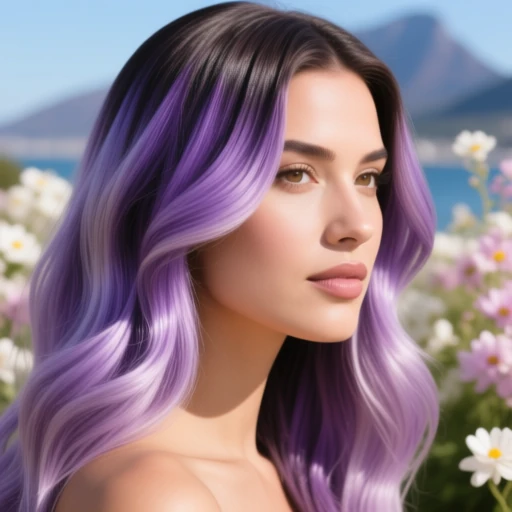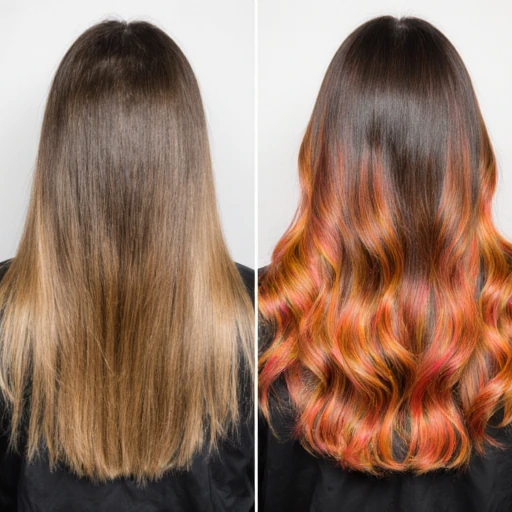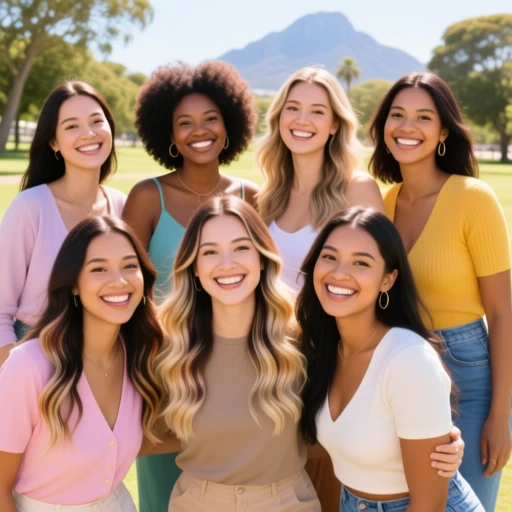
As the calendar flips to spring 2025, there’s something invigorating about the season’s promise of renewal. Flowers bloom, days stretch longer, and for many, it’s the perfect time to refresh your look with a new hairstyle or color. This year, spring hair trends are all about effortless elegance, blending natural vibes with a touch of whimsy. Think soft pastels like lilac and blush pink, warm honey tones, and minimalist balayage that mimics the sun’s gentle kiss on your strands. But amid the excitement of experimenting with these trends, a common hurdle emerges for anyone who’s ever dabbled in highlights: the dreaded duo of damage and fade. If you’ve woken up to brittle ends or watched your once-vibrant color dull after a few washes, you’re not alone. In this piece, we’ll dive into these pain points, drawing from insights shared by balayage specialists, and offer practical solutions to keep your hair looking fresh and healthy. Whether you’re eyeing those fairy waves or a rounded bob infused with subtle highlights, understanding how to tackle these issues can make all the difference in embracing spring hair trends without regret.
Prepare your crowning glory for the best spring hair trends…
Let’s start by pinpointing the problems head-on. Highlighting, especially techniques like balayage, involves lightening select strands to create dimension and brightness. It’s a go-to for spring hair trends because it offers that lived-in, low-maintenance glow that pairs beautifully with textured waves or face-framing layers. However, the process uses lighteners that open the hair cuticle to remove pigment, which can weaken the hair’s structure if not handled carefully. This leads to dryness, breakage, and split ends, common complaints from those chasing the champagne blonde or after-sun blonde looks dominating 2025’s palettes. Fade is another culprit, where colors shift or wash out prematurely, turning your intended warm marigold into a brassy mess or diluting those vibrant jewel tones that are trending this season. Balayage specialists note that factors like frequent washing, sun exposure, and heat styling exacerbate these issues, making it tough to maintain the seamless, natural gradients that define modern spring hair trends.
Imagine stepping into spring with a fresh balayage, only to find your hair feeling like straw after a few weeks. That’s the reality for many, and it’s not just cosmetic. Damage from highlighting can compromise the hair’s integrity, leading to breakage that shortens your style’s lifespan and forces more frequent trims. If you’re sporting one of 2025’s popular cuts, like the artichoke cut or mini bob, weakened strands can ruin the shape, making it look unkempt rather than chic. Fade, on the other hand, means your color loses its punch, requiring touch-ups sooner than expected, which racks up costs and exposes your hair to more processing. Left unchecked, these problems create a cycle: you color to fix the fade, but that invites more damage, potentially leading to thinning or even scalp irritation from over-processing. In a season where trends lean toward healthy, voluminous looks like ’90s it-girl blowouts or braids, ignoring this can leave you frustrated, spending extra on products or salon visits just to play catch-up. It’s like planting a garden only to watch it wilt, the emotional toll of not feeling your best can dampen the joy of spring’s fresh start.
But here’s the good news: balayage specialists have honed techniques and routines that address these challenges directly, allowing you to rock spring hair trends with confidence. The key is a multi-step framework that starts in the chair and continues at home. First, opt for bond-strengthening lighteners during the application process. These formulas work by reinforcing the hair’s internal bonds as the color lifts, minimizing breakage from the get-go. For 2025’s trends, this is especially useful with minimalist balayage, where subtle placements reduce overall exposure to chemicals compared to full-head highlights. Balayage specialists recommend freehand painting for a softer lift, focusing on mid-lengths and ends to avoid root damage and promote natural regrowth. Pair this with lower-volume developers, which lift color more gently, ideal for incorporating pastels or smoky bronze without stripping the hair excessively.
Next, incorporate protective measures during and after the service. A cooling rinse post-lightening helps seal the cuticle, locking in moisture and color while reducing brassiness that often plagues faded highlights. At home, switch to color-safe shampoos infused with antioxidants; these shield against environmental aggressors like UV rays, which are rampant in spring and accelerate fade. Wash less frequently, aiming for two to three times a week with lukewarm water to preserve natural oils and prevent stripping. Dry shampoo becomes your ally here, extending styles like textured waves without sacrificing vibrancy. For deeper nourishment, weekly deep conditioning masks restore hydration, combating the dryness that makes damaged hair prone to snapping.

Heat styling is another area where small changes yield big results. Always apply a heat protectant before using tools, and dial down the temperature to protect lightened sections, which are more vulnerable. This is crucial for spring hair trends like fairy waves or wispy bangs, where curls add movement but can fry ends if not managed. Balayage specialists also suggest hybrid techniques, such as combining balayage with root shadowing or babylights, to create depth that camouflages fade as hair grows out. These methods extend the life of your color, meaning fewer salon trips and less cumulative damage. For those embracing vibrant jewel tones or warm marigold in their balayage, UV-protective sprays are non-negotiable, especially during outdoor spring activities.

To amplify longevity, consider installing a shower filter to remove minerals and chlorine that dull color over time. Regular trims, every six to eight weeks, nip split ends in the bud, preventing damage from traveling up the shaft. Balayage specialists emphasize education, too, often sharing personalized aftercare plans tailored to your hair type and lifestyle. For instance, if you have fine hair prone to breakage, they might recommend peptide-based treatments to rebuild strength. This holistic approach not only solves immediate issues but builds resilience, letting you enjoy trends like copper renaissance or mushroom brown without constant worry.
Now, weaving this into your routine doesn’t have to be overwhelming. Picture consulting with balayage specialists who assess your hair’s condition and customize a plan that aligns with spring hair trends. They might suggest starting with a bond-building session to prep your strands, followed by a gentle balayage that incorporates soft-shadow roots for seamless grow-out. At home, simple swaps like sulfate-free products and air-drying when possible keep things manageable. The beauty of this framework is its flexibility, it fits whether you’re going for a baroque bob with subtle highlights or long layers in champagne blonde. By addressing damage and fade proactively, you invest in hair that not only looks stunning but feels strong, encouraging you to experiment with 2025’s playful elements like baby bangs or cowgirl cuts.
Let’s get a bit more granular with some entertaining anecdotes to illustrate. Take *Sarah, a busy professional who dove into spring hair trends with a full balayage but skipped aftercare, ending up with faded ends that clashed with her textured shag. After switching to antioxidant-rich routines, her color popped for months, turning heads at spring brunches. Or consider how minimalist balayage, a staple in 2025, acts like a clever disguise, its graduated tones hide regrowth, saving you from the “skunk stripe” panic. These stories highlight that with the right knowledge, what seems like a hassle becomes a breeze.
Diving deeper into prevention, balayage specialists advocate for pre-lightening assessments to gauge hair health, ensuring the process doesn’t push boundaries. For fade-prone colors like Hitchcock blonde, toners applied during the service add a protective layer, extending vibrancy. At-home, incorporate oils or serums that seal the cuticle, think of them as a shield against spring’s humidity and pollen, which can otherwise dull your look. Pair this with gentle detangling to avoid mechanical damage, and you’ve got a regimen that’s as effective as it is enjoyable, imagine treating your hair to a spa day every wash.
As we wrap up, remember that spring hair trends in 2025 celebrate individuality, from ultra-short bobs to vibrant pastels, all enhanced by thoughtful balayage. By identifying problems like damage and fade, understanding their impacts, and applying this solution framework, you can step into the season with hair that’s not just on-trend but resilient. Balayage specialists are your guides in this journey, offering expertise that turns potential pitfalls into triumphs. So, why not embrace the change? Your locks will thank you, and who knows, you might just inspire the next wave of spring enthusiasts.
Prepare your hair for Spring 2025 with one of our specials – book today!

